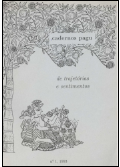Resumo
Abstract
New content and cultural significance were attached to the practices of prostitution in Brazil, during the transition of the tradicional slave society to one of free-labor. The construction of prostitution as a “social evil” by medical and criminological discourses aimed at defining moral codes of social and sexual behavior that guided girls’ inscription in the public sphere. In a moment of massive industrialization, we register a growing participation of girls working in factories and other urban activities. On the other hand, like the immigrant worker, the prostitute was invested with images of positivity: both represented the civilizing ideal of the country’s entry into modernity. If prostitution could mean the threat of rich and poor girls’ corruption, it also signified the new conquests and the introduction of new habits and customs from modern societies to a Brazil recently emerged from slavery. The construction of girls’ identity mobilized new representations of female body - from the ideal of pureness to the prostitute’s perverse sexuality. In the same way, it was associated with the political metaphor of the youth of the nation where everyting was to be constructed
Referências
Alain Corbin - Les filles de noce. Prostitution et misère sexuelle à Paris au XIX siècle. Paris, Flammarion, 1978.
Cícero Marques. Tempos passados. São Paulo, Moema, 1925
Ercília Nogueira Cobra. Virgindade inútil e anti-higiénica. 1927.
Ferreira da Rosa. O Lupanar. Estudo sobre o caftismo e a prostituição no Rio de Janeiro., 1896.
Laura Villares. Extasiso São Paulo, Ed. Antonio Tisi, 1927.
Laura Villares. Vertigem. São Paulo, Ed. Antonio Tisi, 1926
Magali Engel. Meretrizes e doutores: saber médico e prostituição na cidade do Rio de Janeiro, 1849-1890, São Paulo, Brasiliense, 1989.
Margareth Rago, Os prazeres da noite. Prostituição e códigos da sexualidade feminina em São Paulo. Rio de Janeiro, Paz e Terra, 1991.
Margareth Rago. Do cabaré ao lar. A utopia da cidade disciplinar. Brasil, 1890-1930. Rio de Janeiro, paz e Terra, 1985.
Maria Lacerda Moura. Amai... e não vos multipliqueis. Rio de Janeiro, Civilização Brasileira, 1932.
Maria Lacerda Moura. Han Ryner e o amor plural. São Paulo, Unitas, 1932
Maria Lúcia Mott – “Biografia de uma revoltada: Ercília Nogueira Cobra” IN cadernos de pesquisa, São Paulo, nº 58, agosto, 1986.
Miriam Moreira Leite. A outra face do feminismo: Maria Lacerda de Moura. São Paulo, Editora Ática, 1985
Paulo Duarte. Memórias, vol. 1, São Paulo, HUCITEC, 1975, p. 122.
Sílvio Floral, Ronda da meia-noite, São Paulo, Cupolo, 1925

